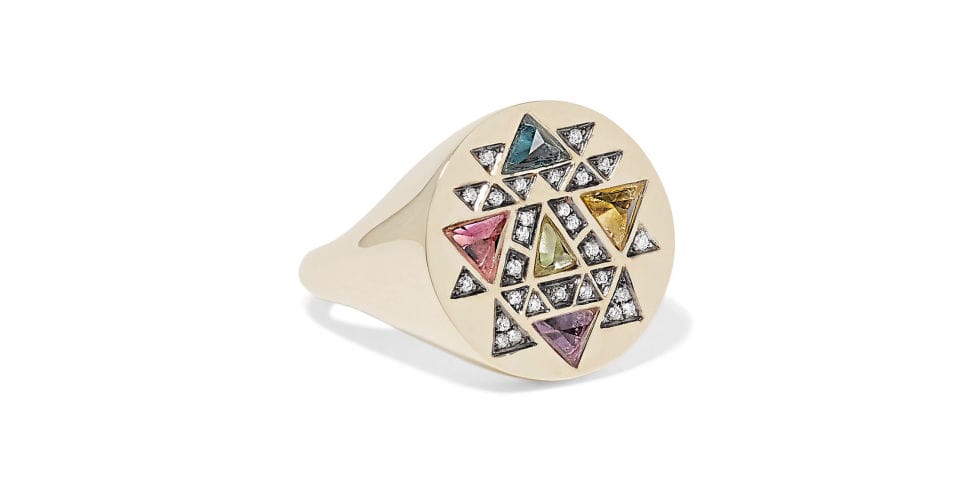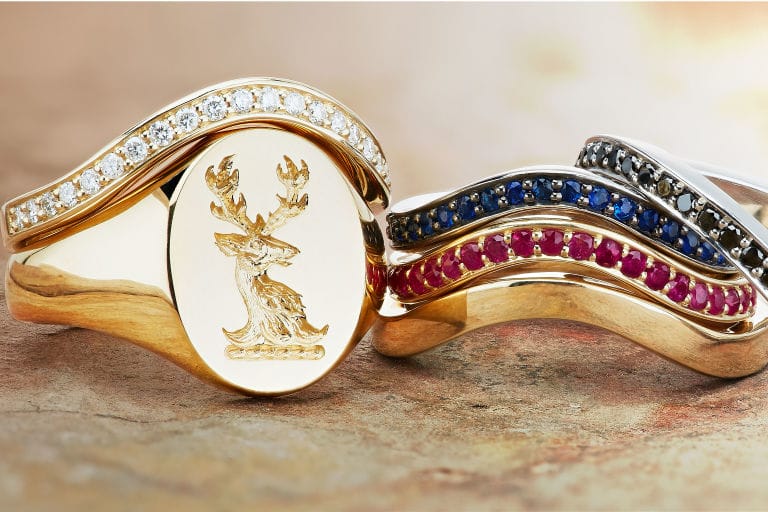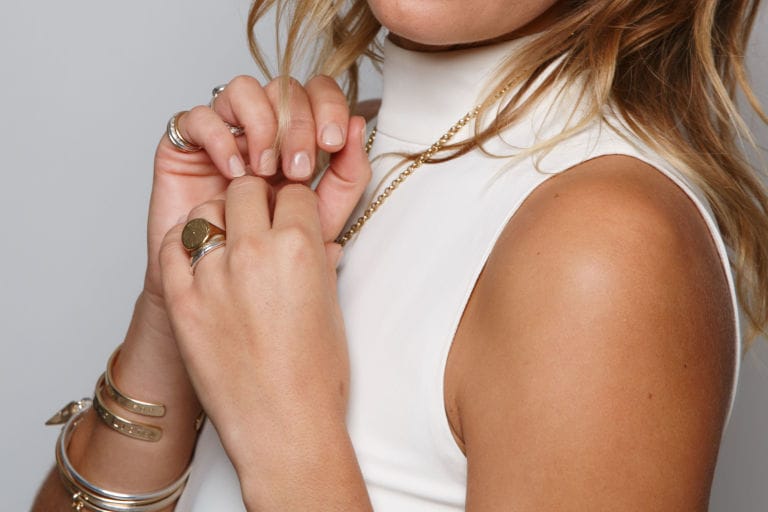
Recent seasons of maximalist fashion have forced designers to re-think the presence of jewellery on the catwalk. Increasingly, luxury brands have begun designing costume jewellery or small collections of fine jewellery that complement their elaborate, highly adorned ready-to-wear.
But, these jewels still need to have a fashion edge that separates them from traditional fine jewellery houses, while remaining wearable pieces that consumers will crave. The solution? The signet ring. Givenchy, JW Anderson and one of fashion’s favourite fine jewellery designers, Noor Fares, have all turned their attention to signet rings; no longer the sole reserve of posh men in red trousers.
“I suppose in a way signet rings are witnesses to time – I often used to see them in antique jewellery shops and wonder what story they held from their previous owner,” explains Fares, who has always loved signet rings because of the way they connect the wearer to their heritage and roots. “The signet rings I design allow the wearer to create their own meaning within the ring, whether it be through a birthstone, or a connection with the design.” The trend for layered and stacked jewellery appears to be waning in favour of simple, easy and bold pieces, especially those that can be personalised, such as signet rings.

Designers are not, of course, reinventing the wheel here. Emmet Smith, an apprentice in Hatton Garden during the 1980s founded Rebus in 2002, to create a fine jewellery workshop that specialised in bespoke, precious signet rings – and what he doesn’t know about their epic history isn’t worth knowing. “Historically, signet rings were known as the ‘gentleman’s ring’ and traditionally seen as a symbol of family heritage, but signet rings have been around much longer than heraldry – there are many example of Egyptian signets engraved with hieroglyphs and ancient Greek signets engraved with symbols of deities and mythical beasts,” he explains.

For the last few centuries, signet rings have traditionally born the family crest or coat of arms, usually engraved in reverse so that they can be pressed into wax to be used as a seal for letter writing. “Sealing in this way was official, authentic and could not be forged – it was seen as a form of identification, and quite often the signet ring would be destroyed or buried with the owner once they had died,” says Smith.
But if you don’t have a family coat of arms, are you excluded from the club? “It has been a long time since they were worn purely by people with a family crest,” says Daniella Draper, a contemporary jeweller who offers a modern collection of signet rings in silver and gold. “There is such a variety of styles now that complement other varieties of rings, can be worn on all different fingers by both men and women, and are a lot more obtainable,” she adds.

For those who don’t have a pre-determined design, the Rebus workshop will work with their customers to create bespoke artwork by discussing what sentimental elements they want to include; perhaps a special date or place, a favourite pet or song lyrics. “Collating a few images or creating a mood board is a good start,” says Smith. “We also have a collection of Victorian reference books of heraldry and symbols to look through, and our Instagram and Pinterest pages are another great source of inspiration.”
The options are limitless, as proved by the fantastically imaginative designs that Smith has created. “We can create and engrave just about anything – the most unusual commissions are probably a toss-up between an origami bear holding a diamond-set pineapple, or a skeleton casually leaning against a rhino eating radishes,” he quips.
Whatever you choose, be it eccentric motif or a classic crest; make it count. “I think signet rings are the one style that will stand the test of time as they’re not really about fashion,” adds Fares, “but more an extension of the self.”
This article originally appeared on Harper’s BAZAAR UK.



